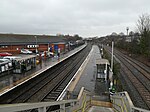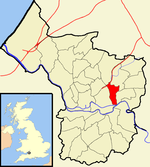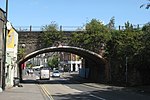City Academy Bristol
2003 establishments in EnglandAcademies in BristolEducational institutions established in 2003Secondary schools in BristolSports venues in Bristol ... and 1 more
Use British English from February 2023

The City Academy Bristol is a mixed gender secondary school with Academy status, located in the Easton area of Bristol, England.
Excerpt from the Wikipedia article City Academy Bristol (License: CC BY-SA 3.0, Authors, Images).City Academy Bristol
Brook Street, Bristol Redfield
Geographical coordinates (GPS) Address Phone number Website External links Nearby Places Show on map
Geographical coordinates (GPS)
| Latitude | Longitude |
|---|---|
| N 51.4602 ° | E -2.5624 ° |
Address
City Academy Bristol
Brook Street
BS5 9JH Bristol, Redfield
England, United Kingdom
Open on Google Maps








